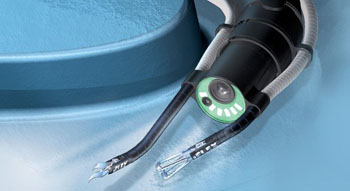Robot-Assisted Platform Advances Colorectal Surgical Procedures
By HospiMedica International staff writers
Posted on 09 Nov 2016
A robot-assisted system offers an affordable, easy-to-use, and highly mobile platform for performing minimally invasive treatments in confined spaces.Posted on 09 Nov 2016
The Flex Robotic System uses a flexible scope that precisely travels through the body’s natural twists and turns in order to provide surgeons with single-site access and visualization of hard-to-reach anatomical locations. The flexible scope snakes its way to the surgical site; once the desired vantage point is reached, the scope turns rigid, forming a stable platform. An integrated high definition (HD) video system then facilitates visualization and execution of surgical operations, using a range of flexible “wristed” 3-mm surgical instruments.

Image: The Flex Robotic System for minimally invasive surgery (Photo courtesy of Medrobotics).
The system was first developed for minimally invasive transoral procedures in the oropharynx, hypopharynx, and larynx, and has now been additionally approved for use in colorectal procedures. Developed at Carnegie Mellon University (Pittsburgh, PA, USA), the system can be used on its own or in conjunction with a highly adjustable proprietary retractor. The Flex Robotic System and Retractor are products of Medrobotics (Raynham, MA, USA), and have received the European Community CE mark of approval.
“CE Mark for colorectal procedures is significant since it expands the number of patients who can be treated with the Flex robotic system, and provides a true platform technology that multiple hospital departments can use,” said Samuel Straface, CEO of Medrobotics. “When combined with the unrivaled mobility of the system, European otolaryngology and colorectal surgeons can now perform minimally invasive surgery through the body’s natural orifices, offering the potential for truly scarless surgeries.”
Natural orifice transluminal endoscopic surgery (NOTES), is a surgical technique whereby operations can be performed with an endoscope passed through a natural orifice (mouth, urethra, anus, etc.), thus avoiding any external incisions or scars. Since the use of flexible endoscopes results in a partial loss of spatial orientation and depth perception, other approaches are needed to keep a stable horizon, such as a 3-axis accelerometer that can be integrated into the tip of the endoscope.
Related Links:
Medrobotics














